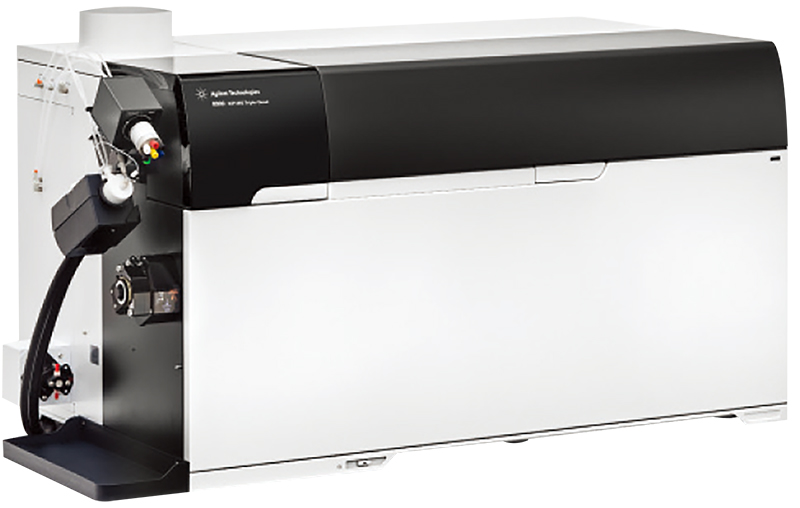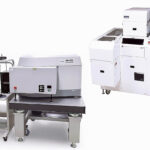ASIA ELECTRONICS INDUSTRYYOUR WINDOW TO SMART MANUFACTURING
IC, Materials Process Hinge on High-Purity Analysis
The ICP-MS elemental analyzer of Agilent Technologies Japan, Ltd. measures impurities in solution. Because of this, it can analyze multiple elements with high sensitivity and evaluate impurities in resists, abrasives, and ultrapure water at the ppt (one over one trillion) level or less. The use of ICP-MS is popular in the semiconductor industry.
For measurement, the mass spectrometer ionizes the elements for separation. Inductively coupled plasma (ICP) serves as the ion source. It atomizes the liquid sample, introduced into the ICP, after which, the plasma ionizes.
The applied voltage to four filters called Q poles, only those with specific mass number can pass through. One can determine the type of element with the mass number of passing ions.
The signal intensity proportional to the element concentration can provide the concentration of the element in the sample.

Reduces Interference
If there is one challenge for the elemental analyzer, it is how the interference of polyatomic ions may affect its measurement.
For example, when measuring an iron with mass of 56, the combination of argon with mass of 40 and oxygen with mass of 16 gives the same mass of 56 (isobar). Usually, the argon gas ionizes the elements. It easily combines with oxygen in the air, making it difficult to detect trace amounts of iron.
ICP-MS has a collision reaction cell in front of the mass spectrometer. It is a device for removing and reducing interference of substances other than the element that needs measurement (iron, in this case). Chemical reaction may remove interfering ions from the measurement sample. In addition, it also excludes atomic species that have the same number but different elements.
Elements pass through a cell filled with helium gas. Interfering substances (for example, argon plus oxygen) other than the element subject of the measurement has a collision cross section larger than the element. As a result, they collide with helium gas more frequently and do not reach the mass separation part behind the cell.
Indispensable for IC Manufacturing
The triple quadrupole ICP-MS has further improved the function of eliminating interference of polyatomic ions. In this device, cells sandwiched between two Q poles and connected in series, enable trace analysis of sulfur, among others.
The company has accumulated the know-how since it launched the first machine in 2012 ahead of other companies. Wafer, resist, and ultrapure water suppliers use ICP-MS. Furthermore, semiconductor manufacturers and manufacturing equipment manufacturers also use ICP-MS for inspection.
To increase the yield of products, it is important to evaluate not only the metal concentration in the chemical solution used in the manufacturing process but also the concentration of nanoparticles.
The triple quadrupole 8900 ICP-MS measures the particle size distribution and the number of particles in the solution. It can analyze 15nm iron nanoparticles contained in organic solvents. As a result, it can minimize the risk of generating defects on the wafer surface.
The company sees ICP-MS analyzer as indispensable for monitoring impurities in reagents and materials used in the semiconductor manufacturing process.




